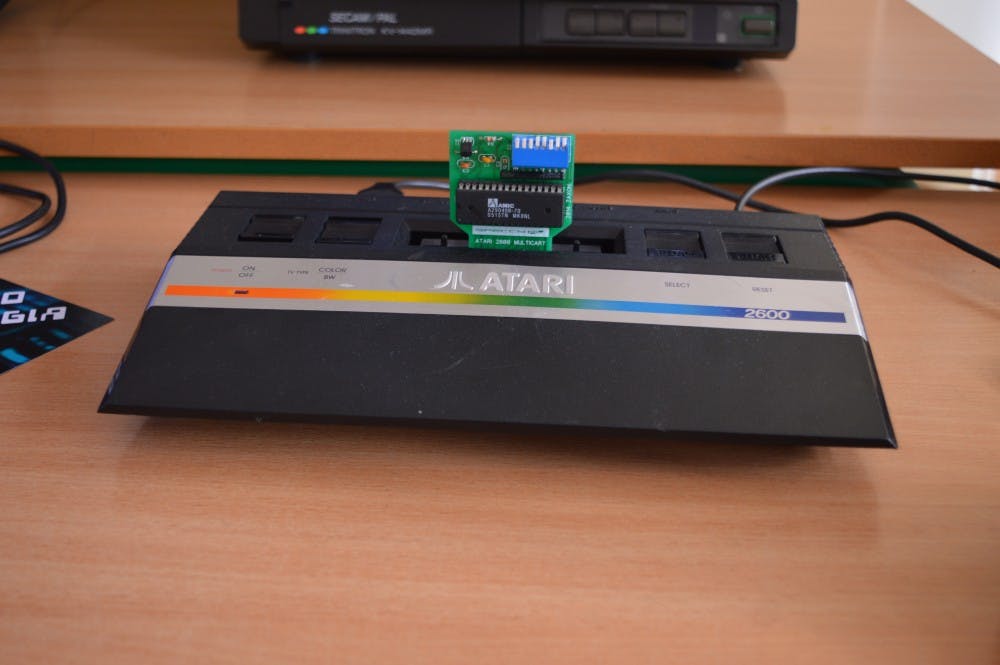
Jason H. Moore, a professor of artificial intelligence and director of the Penn Institute of Biomedical Informatics, had always kept separate his two life passions — his love for his childhood Atari 2600 home video game console and his academic interest in the field of bioinformatics. But now, with his newly developed video game, Moore has finally brought the two together.
In late December, Moore unveiled his new personal project: an Atari video game entitled “Gene Medic," which integrates the modern developments in gene editing with old school gaming.
The Atari 2600 home video game console was a device popular in the 1970s that allowed consumers to play video games on their television sets at home. Its success popularized the widespread use of video games in American households.

Jason H. Moore
In “Gene Medic," a character on the screen runs across a virtual chromosome, the material that contains the genetic information in each cell, of a sick patient and stumbles upon various mutations, or changes in the genetic information. The player is challenged to determine whether the mutation encountered is contributing to the sickness of the patient and, therefore, whether to edit the chromosome by removing the mutation.
In addition to confronting the complexities of modern gene-editing technology, players are also faced with the real-life pressures of medical expenses and insurance reimbursements as they make decisions throughout the game.
“Gene Medic” is part of a growing trend in media known as “edutainment”, a genre of platforms which attempt to merge education with entertainment. Similar to TED-talks and educational podcasts, "Gene Medic" utilizes the popularity of its medium, the Atari 2600 home video game console, to educate individuals on a specific field of knowledge.
In addition to working on an Atari 2600 home video game console, “Gene Medic” can also be played on a desktop computer or an Android phone. Users can download the game’s binary code, the digital instructions which run the game, from the internet and use an online emulator, a software that allows an ordinary computer to function like an Atari console, to play the game.
Although its function on the Atari console stemmed from Moore’s personal childhood nostalgia, the video game is intended for the increasingly large "retro gaming" community, whose individuals collect and play video games on discontinued computer game consoles like the Atari 2600.
Although he is aware of the game's niche audience, Moore said that he hopes he will be able to reach the general public by providing an option to play the game on a computer.
He added that he hopes to educate players of the game about the complexities of gene-editing.
“There's been a resurgence of interest in these old games and old systems,” Moore said. “Through that audience, my goal is to introduce them to these basic concepts of human genetics and to get them thinking about this modern technology and how it might help us.”
College and Wharton sophomore Judy Hong, who volunteered to test some of Moore’s artificial intelligence research projects last fall, said that she was not initially aware of the game. However, upon viewing it, she said that she sees the game as a part of Moore's effort to democratize his challenging areas of expertise.
“The fields of artificial intelligence and bioinformatics are out of reach for most people,” Hong said. “Jason [Moore] is simply trying to make the knowledge accessible to the layman.”
Visiting Penn professor Moshe Sipper, who studies artificial intelligence, highlighted the educational potential that lies within “Gene Medic.”
“The main thing that’s interesting about the game is that it shines a light on how you can combine genetics in a gaming context, giving kids insight into concepts that are really hard to grasp,” Sipper said. “It’s edutainment at its best.”
The Daily Pennsylvanian is an independent, student-run newspaper. Please consider making a donation to support the coverage that shapes the University. Your generosity ensures a future of strong journalism at Penn.
Donate






